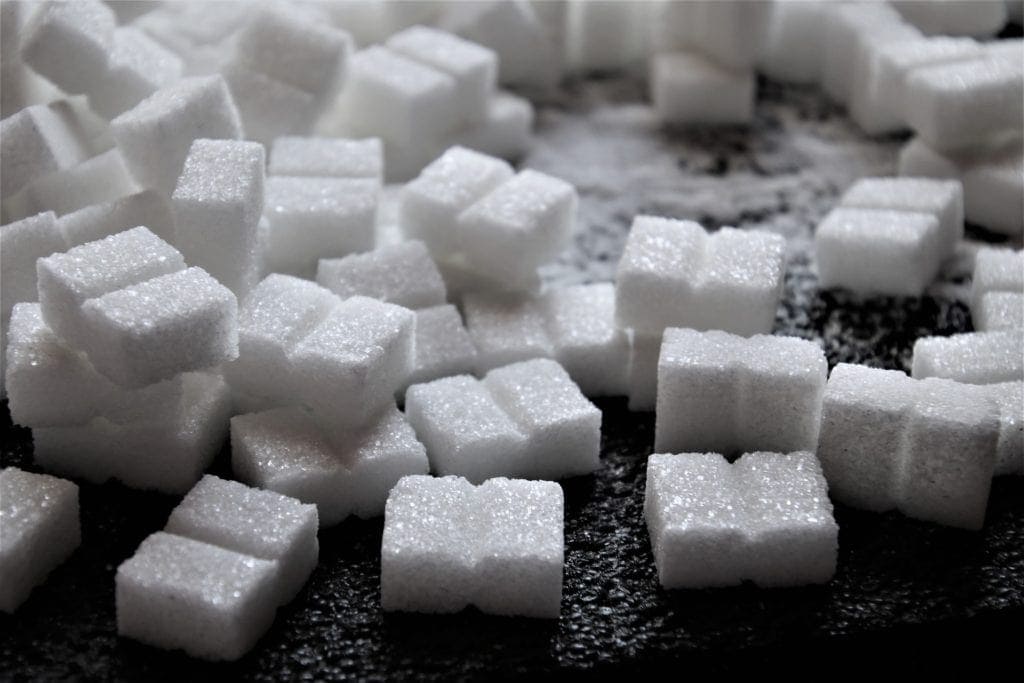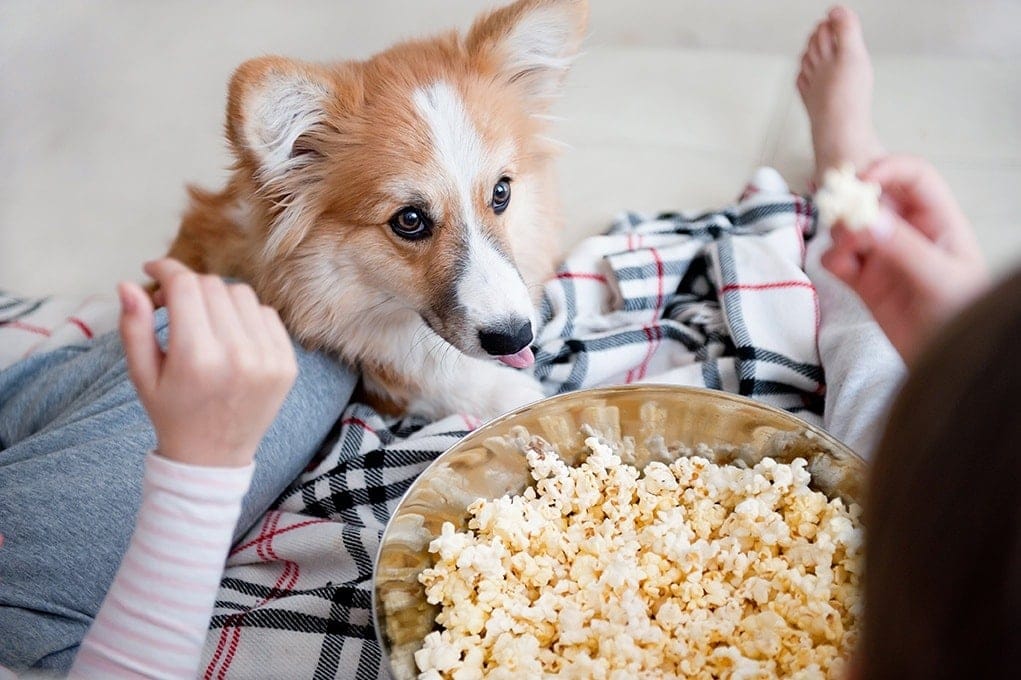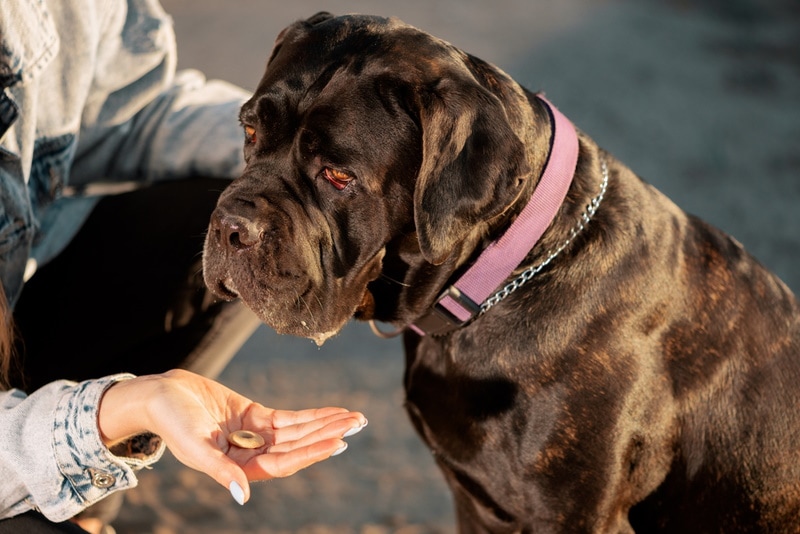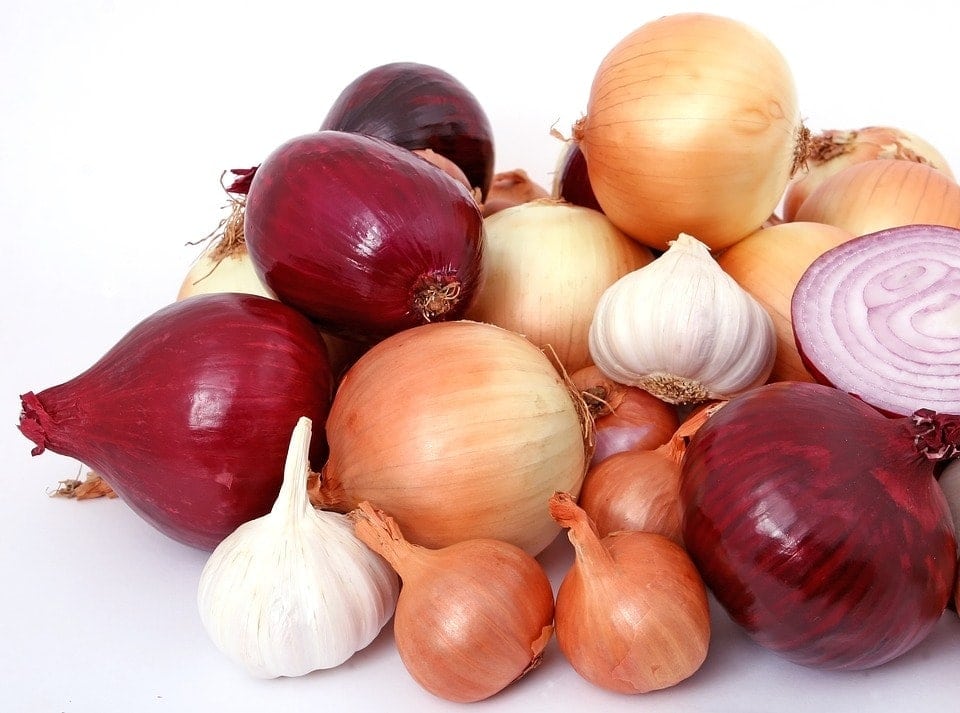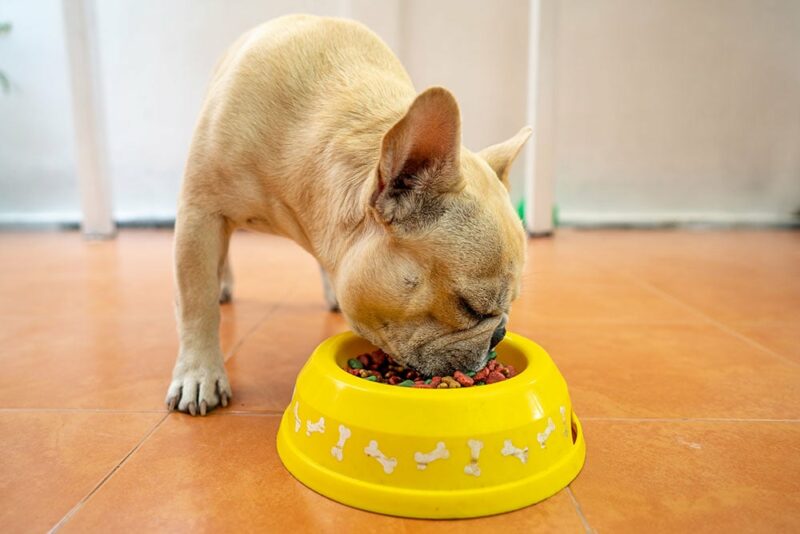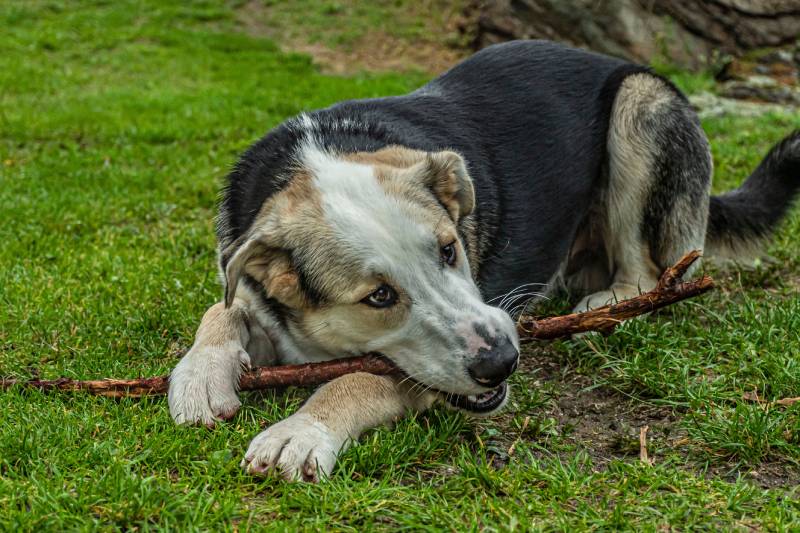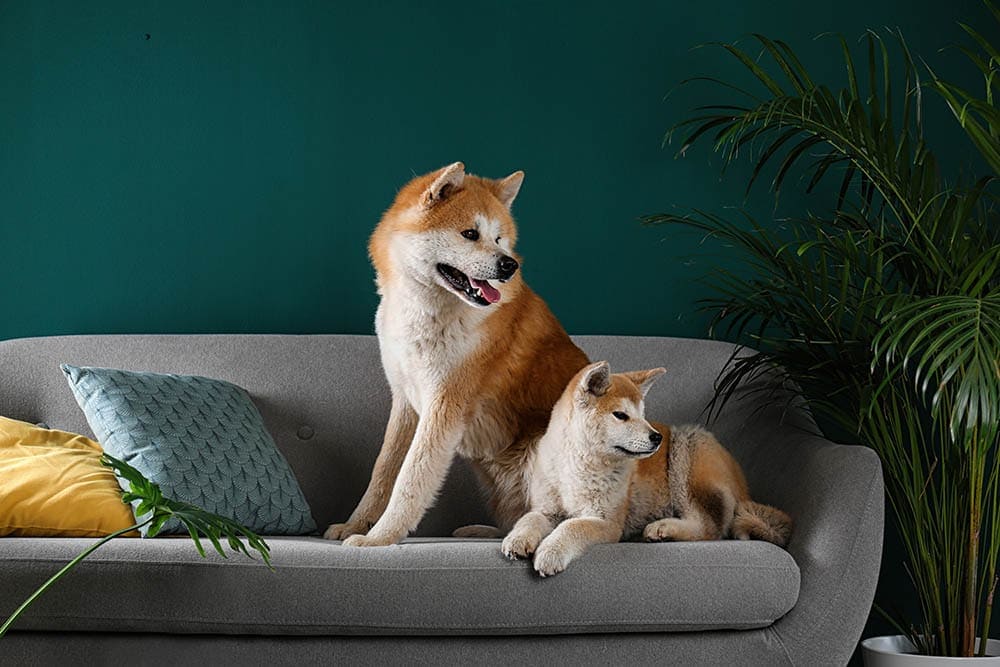Can Dogs Have Balsamic Vinegar? Vet-Reviewed Facts & Safety Guide
Updated on
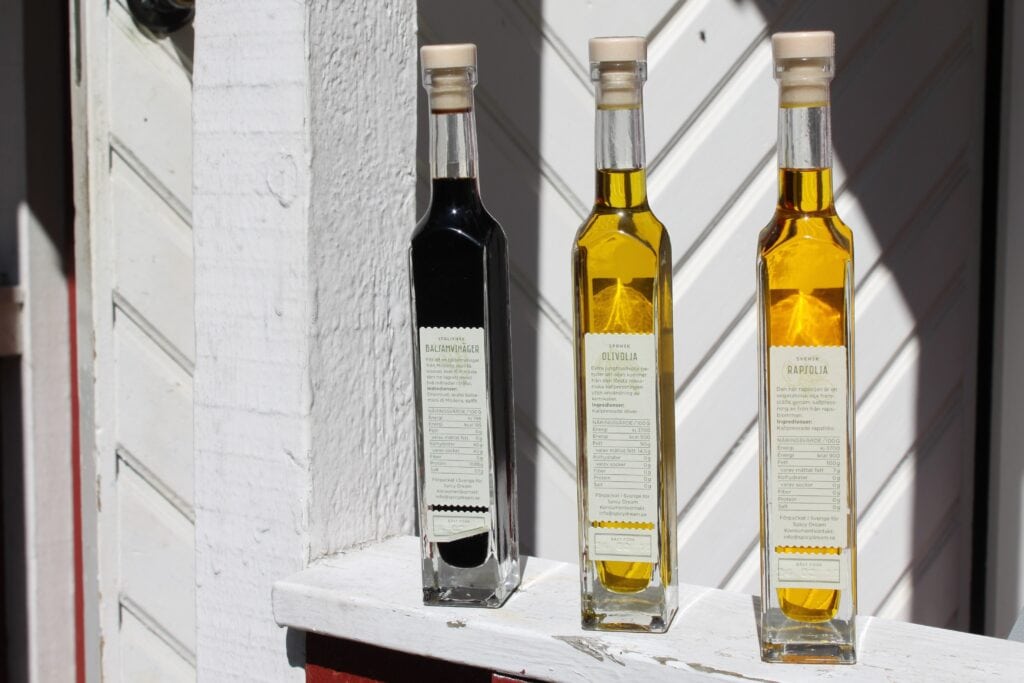
Balsamic vinegar is the tasty, rich, dark vinegar that is commonly used in salads, marinades, glazes, and as a sauce in many Italian-style dishes. When you have dogs, it’s important to know what types of human foods are safe, and which ones are not.
Even if you don’t offer your dog table scraps, it’s not unusual that our beloved four-legged friends help themselves to our leftovers or anything we leave unattended. When it comes to balsamic vinegar, a small amount will often not cause any problems, but large quantities can result in toxicity, so this condiment should be kept safely out of a dog’s reach.
What Is Balsamic Vinegar?
Balsamic vinegar is dated as far back as 1046 when it was referenced to have been gifted to Emperor Enrico III of Franconia. Originating in Modena, Italy, the traditional balsamic vinegar contains only the ingredient grape must. Grape must is the sweet grape juice that includes the stem, seeds, and skin.
The freshly pressed grapes are boiled to a concentrate, fermented, acidified, and then aged for 12 to 25 years or more in wooden barrels. Commercially available varieties often contain added ingredients such as red wine vinegar, corn starch, syrup, and artificial colors.

Why Dogs Shouldn’t Eat Balsamic Vinegar
Grapes are highly toxic to dogs and since balsamic vinegar is derived from grapes, owners should keep this vinegar secure and stored safely away from their dogs. The exact reason why grapes are toxic to canines is still unknown but feeding it to your four-legged pal can lead to symptoms similar to grape toxicity.
Aside from being a grape-derived food product being enough reason to keep dogs away from balsamic vinegar, you also have sugar content and certain food additives that should also be avoided.
Grape Toxicity
Though scientists do not yet completely understand why grapes are toxic to dogs, a more recent theory points to tartaric acid. Tartaric acid is found in low levels in other foods such as bananas and citrus fruits but is higher in grapes, especially red grapes. While there is not yet enough evidence to fully conclude, tartaric acid may attack a dog’s kidneys and potentially lead to kidney failure.
Signs of Grape Toxicity
Dogs can eat foods with naturally occurring sugars like certain fruits or vegetables, but they should not be allowed to consume foods that contain added sugar. Excessive sugar is never a good thing, even in the human diet, and should be avoided if possible. Large amounts of sugar can easily lead to obesity, which sets the stage for numerous other health problems. Artificial colors, flavors, and preservatives are common in both human and pet foods. While your traditional balsamic vinegar and higher quality modern varieties will have limited ingredients, some lower quality balsamic vinegar and vinaigrette may contain caramel color, artificial flavors, and preservatives. Occasionally feeding safe human foods is certainly not going to be detrimental for your dog but owners should be knowledgeable about which foods are safe for dogs to consume and which are not. Offering safe table scraps or other human food is generally not recommended for several reasons. Feeding your dog leftovers or allowing them to have a bite of your meal or snack can very easily lead to begging behavior. This can be very frustrating, inconvenient, and difficult to rectify once the behavior has been established. You don’t want your dog staring at you and others and possibly even whining, or exhibiting other attention-seeking behaviors because they think they can have a bite whenever they want. It may be hard to resist those puppy dog eyes and may seem harmless to share just a little bit, but doing so will only reinforce the behavior and make the problem worse. Breaking this unhealthy habit will require a lot of training, time, and patience, so it’s your best bet to never even start. Human food can cause digestive issues for dogs, especially those that have particularly sensitive stomachs. Many human foods are also full of sugar, carbohydrates, fat, and additives which are incredibly unhealthy for your dog to eat. If you consistently feed your dog leftovers, they may start to get picky with their dinner and refuse to eat their dog food in anticipation of their meal of human food. This can be alarming, especially if the dog is refusing to eat altogether and their owner has no idea why. It raises the question of whether there could be an underlying health issue. As mentioned when speaking of grape toxicity, feeding human food will increase the likelihood that your dog eats something toxic. If they feel like they can help themselves to your food, they may not only eat it when you offer it but go out of their way to grab food off the counter or from the trash can. This can be dangerous and can potentially result in a medical emergency if they consume a toxic food item. Feeding your dog a healthy, well-balanced, and nutritious diet is key to keeping them happy and healthy, so we’ve provided some extra tips on how to offer your dog the healthiest diet possible. There are plenty of dog food and dog treat brands on the market, so it is a good idea to research these brands, read reviews from other dog owners, search for recall history, and speak to your vet to see if they are developed to meet your dog’s nutritional needs. Learning how to read the dog food label can help you find the best option for your best friend. Labels are going to include the list of ingredients, caloric content, and guaranteed analysis. Once you know what you want out of your dog’s food, you can then check the label to see how each food compares to the others. It is often recommended that dog owners avoid certain ingredients when shopping for food. This includes artificial preservatives, flavors, and colors. It’s a good idea to talk about ingredients with your veterinarian and bring up any concerns or questions you may have so they can help you make the best decision for your dog. You should always be feeding your dog high-quality food with balanced nutrition that is based on their specific needs. Diets should be appropriate to the dog’s size, age, and activity level, as well as tailored to meet any specific health needs. Special diets and/or supplements may be required if your dog suffers from certain health problems or could benefit from supplementation. Specialty diets and supplements should only be offered if first approved by your veterinarian. Any questions regarding your dog’s dietary needs should be something you bring up to their vet. Since they are aware of your dog’s health and medical history, they will be able to give you the best advice for your dog’s dietary regimen. Always reach out to your vet before making any changes to your dog’s diet or if you are concerned about something they’ve eaten. If your dog were to consume a very small amount of balsamic vinegar, it’s likely not going to cause any problems. If they have consumed a large quantity, they could be at risk of toxicity since this vinegar is derived from grapes, which are toxic to dogs. Never willingly offer your dog anything with balsamic vinegar on or in it and do not hesitate to reach out to your veterinarian if you are concerned about something they have eaten. See also: Featured Image Credit: JumpStory
Sugar
Artificial Colors, Flavors, and/or Preservatives
Top 4 Reasons to Avoiding Offering Human Food
1. Begging Behavior
2. Digestive Issues
3. You May Create a Picky Eater
4. Risk of Toxicity
Tips for Feeding Your Dog a Healthy Diet
Research Dog Food and Dog Treat Brands
Learn How to Read Labels
Avoid Unnecessary Ingredients
Consider Your Dog’s Specific Needs
Talk to Your Veterinarian
Final Thoughts



